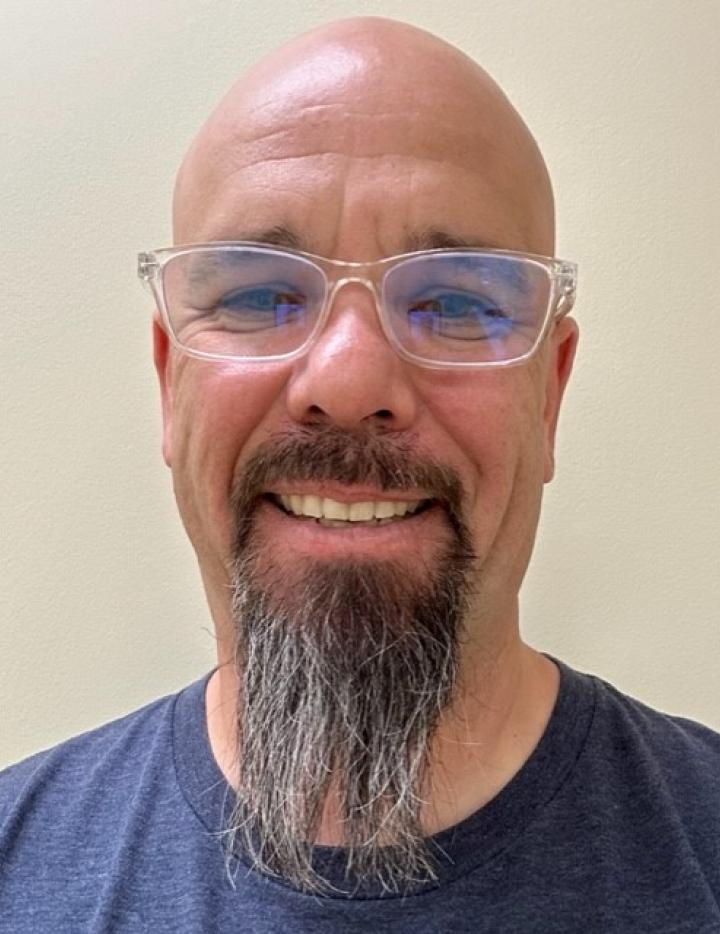
OFD 2023
Program
Note: Program is subject to change.
To view session descriptions click on "More Info" and then click on the presenter's name to view their biography.
Saturday
October 21, 2023
CDK 4/6 inhibitors are a class of drugs that target enzymes called Cyclin Dependant Kinases 4 and 6. Targeting CDK 4/6 have revolutionized the treatment of patients with metastatic HR+ HER2- breast cancer. While there is increasing evidence regarding the efficacy of CDK4/6 inhibitors in adjuvant HR+ HER2- early breast cancer, better toxicity management is key to improving patient adherence to the treatment and achieving optimal outcomes. This symposium will engage Dr Asselah, medical oncologist and Glenn Myers, pharmacist, in a case-based discussion highlighting current strategies in the managing of CDK4/6 inhibitors side effects.
Learning Objectives
- Summarize the current evidence for using CDK4/6 inhibitors in HR+ HER2- eBC.
- Discuss the clinical use of CDK4/6 inhibitors in eBC and provide practical considerations for implementation.
- Implement a multidisciplinary approach for the management of CDK4/6i adverse events (AEs) in eBC.
- Discuss the role of dose reduction in the management of CDK 4/6i AEs to maintain treatment adherence.
Symposium sponsored by Eli Lilly.
Presentation Summary
Interpretation of bloodwork in oncology can be a complicated process requiring consideration of multiple factors including patient specific, disease related and treatment associated concerns. This presentation will provide a basic overview of laboratory values used in the ongoing monitoring of patients receiving treatment in oncology. The landscape of oncology treatment is rapidly changing beyond traditional cytotoxic agents, to include integration of more targeted therapies and treatment combinations. More than ever, this calls for frontline pharmacists in various practice settings to be aware of basic considerations involved in interpreting bloodwork in patients receiving oncology treatment.
Learning Objectives
1. Recognize the importance of bloodwork interpretation as part of baseline assessment and ongoing clinical monitoring of patients receiving oncology treatment.
2. Outline laboratory values associated with hematologic toxicities commonly related to oncology treatment.
3. Describe laboratory values associated with assessment of renal and hepatic function and importance of monitoring these in patients receiving oncology treatment.
Presentation Summary
Lung cancer is one of the most commonly diagnosed cancers in Canada, and it remains the leading cause of cancer-related mortality worldwide. Often when lung cancer is diagnosed it is already in the advanced stages of the disease, limiting potential treatment options. While chemotherapy still remains a commonly used treatment more recent developments, including immunotherapy and the identification of targetable gene mutations, have led to advancements in the treatment of lung cancer.
Learning Objectives
1. Identify common signs/symptoms of lung cancer
2. Differentiate between small cell lung cancer (SCLC) and non-small cell lung cancer (NSCLC)
3. Describe general treatment approach of advanced stage NSCLC
4. Identify major targetable mutations that occur in NSCLC and potential treatment options
5. Describe general treatment approach of SCLC
Presentation Summary
In this learning activity we will discuss the use of Dose Vial Optimization (DVO). Dose Vial Optimization is a method of extending the length of time that a drug remains STERILE up to as much as 7 days by using a closed-system drug transfer device (CSTD). In this activity we will give an overview of DVO, the roles Pharmacists and Pharmacy Technicians play, how the testing process is done, how DVO is implemented, and how DVO has impacted our Hospital Chemotherapy Pharmacy.
Learning Objectives
At the conclusion of the presentation, the audience will be able to:
1. Describe what Dose Vial Optimization (DVO) is and how it relates to hospital practice.
2. Discuss the Roles of Pharmacists and Pharmacy Technicians in the DVO process.
3. Describe how, once implemented, DVO is conducted at a hospital pharmacy.
4. Explain the impact DVO can have in hospital pharmacy practice.
Presentation Summary
At Extend Pharmacy, we are a speciality oncology pharmacy focused on providing the best experience possible for each one of our patients. We focus on ensuring each patient feels supported and cared for like one of our own family members. A new patient begins with a warm welcome from the enrollment team, then moves onto coverage and reimbursement and drug interaction checks. We look for the best long-term coverage for each treatment by exploring all our options through provincial coverage (ie. OHIP/EAP), private insurance and patient support programs. During the enrollment process, we confirm and collect all the required personal information, including email, emergency contact and insurance details. Consent is a large component of this process to ensure each patient feels safe and comfortable with the services we provide. Finally, collecting a full medication history is most important so that the pharmacist can check for any drug interactions with their current medications and new treatment plan. We ensure to ask about vitamins and natural health products to get the most detailed list possible. Identifying these interactions in advance gives our team time to contact the family doctor and/or oncologist to make the necessary changes to avoid delaying treatment starting. We strive to provide a welcoming and warm experience to each patient; without breaking the bank.
Learning Objectives
At the conclusion of the presentation, the audience will be able to:
1. Describe the roles and responsibilities of the Enrollment team in the best possible medication history (BPMH) process, including both technicians and pharmacists.
2. Recognize the significance of collecting a comprehensive and accurate medication history during the care process.
3. Discuss the intricacies of long-term coverage and reimbursement in this field.
Presentation Summary
The treatment of some cancers involve daily or weekly administration of subcutaneous chemotherapy for an indefinite period. Requiring patients to present to the hospital with this frequency can cause a burden on both the health care system as well as patients and caregivers. In this presentation, we will provide an overview of the program offered by Cancer Care Alberta that allows patients to administer subcutaneous bortezomib and cytarabine at home. We will discuss implications to treatment regimens as well as preparation techniques required to maintain NAPRA compliance.
Learning Objectives
By the end of this presentation, participants will be able to:
1. Describe patient and treatment related factors that allow for injectable chemotherapy to be self-administered at home
2. Discuss benefits and challenges to patients and the health care system that occur with implementing a self-administered injectable chemotherapy program
3. Identify the steps that must be taken when preparing injectable chemotherapy for home administration to ensure compliance with NAPRA standards
Presentation Summary
Fertility is an important priority among cancer survivors. With increasing survival rates among adolescents and young adults with cancer, health care providers should ensure that patients are given the opportunity to discuss their fertility concerns and undergo fertility preservation procedures before cytotoxic therapy or surgery. This presentation will provide an overview of the most current approaches and options in oncofertility.
Learning Objectives
At the conclusion of the presentation, the audience will be able to:
1. Describe normal physiology as it relates to the male and female reproductive system
2. Identify fertility preservation options currently available for the post-pubertal patient with eggs and sperm
3. Discuss emerging fertility preservation options for the pre-pubertal patient
Presentation Summary
Although drug information sources can be a quick and easy solution for solving everyday questions, interpretation requires healthy skepticism and critical thinking. This session will introduce the attendee to a variety of useful oncology drug resources while discussing important strengths and limitations. Awareness of the spectrum of resources available in addition to common pitfalls with their interpretation will allow the clinician to improve application to patient care decisions. In addition, this session will have an interactive component to demonstrate the important steps in completing an efficient drug literature search on the fly.
Learning Objectives
By the end of the session, attendees will be able to:
1. Navigate multiple resources helpful for solving oncology-related questions in practice
2. Critically evaluate the quality and applicability of drug information to help inform clinical judgment
3. Create a PICO question and then use it to develop an efficient literature search
This symposium will help pharmacy staff understand key data supporting indications for BTKi's and appreciate the differences between available agents. The second objective is to transfer knowledge on dosing, co-administration, and AE management strategies for patients on BTKi's from a Canadian and pharmacy perspective.










